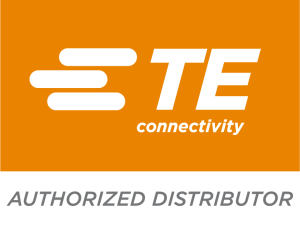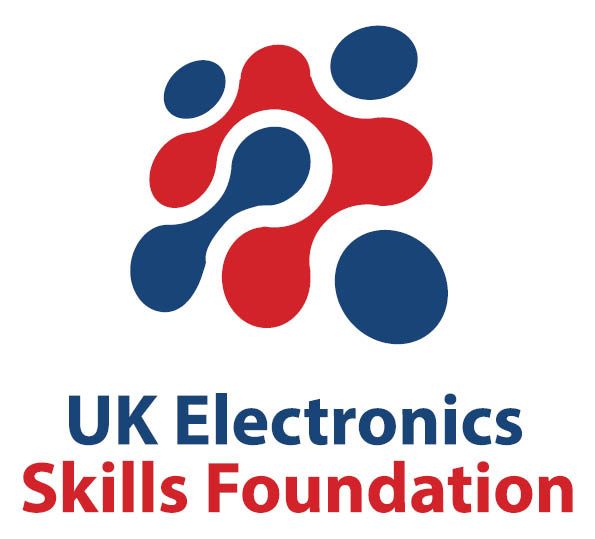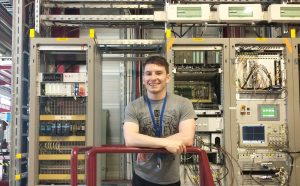Here, in our series on the latest EW BrightSparks of 2022, we highlight Lee Millar, a Senior Fellow at the European Organization for Nuclear Research (CERN).
Achievement
With the success of his PhD in 2021, which followed a First Class MEng in Nuclear Engineering, Lee secured a position as a senior fellow at CERN in the Accelerator Systems Department and began work on Linac4, the proton source for the CERN accelerator complex (including the large hadron collider).
Achievements in this role, we learned, include helping design, test and commission an acquisition system for the first stage of CERN’s Linac4, which is comprised of a signal conditioning crate which converts 352.2 MHz RF signals to a scaled DC voltage and an array of National Instruments acquisition cards.
He has also been developing software using LabVIEW that monitors one of Linac4’s RF cavities for vacuum arcs using the measured RF signals and automatically logs such events. This software will eventually be used to monitor and regulate the operating voltage of a new, 3-metre-long copper RF Cavity.
He has also served as a peer reviewer for the scientific journal Nuclear Instruments and Methods in Physics Research.
Some of the honours and awards Lee has received include the Lancaster University Outstanding PhD Achievement Award, a Second Place Student Prize (during his PhD) at the 30th International Linear Accelerator Conference (LINAC2020), and winning the IMechE Best Project Certificate for his MEng dissertation. This covered the design, build, and test of an electron linear accelerator (LINAC) intended for producing X-rays for industrial applications.
Lee was also the recipient of an IET Diamond Jubilee Academic Scholarship, a four-year university scholarship awarded on the grounds of academic merit by the IET.
Linear accelerators
His PhD research focused on the development of high-voltage, compact linear accelerators for applications including radiotherapy and high-energy physics research i.e. future particle colliders and X-ray free-electron lasers (XFELs).
He was responsible for performing RF measurements of prototype copper particle accelerator cavities using a VNA, both at room temperature and while they were submerged in liquid helium in CERN’s cryogenic laboratory.
Achievements during this time included developing a Monte Carlo model written in Python for simulating vacuum arcs in high-voltage particle accelerators.
Also, to increase the number of signal acquisition channels in one of CERN’s 12GHz particle accelerator test stands, he designed, tested and commissioned a low-level radiofrequency (LLRF) system design comprised of 12GHz up/down-converters, an IQ demodulator, and a National Instruments-based acquisition system programmed in LabVIEW.
He also developed a novel calibration method to provide absolute phase measurements using this arrangement, and the system is still currently in use at CERN’s test facility.
Acting as an operator in CERN’s high-power test stands, we further learned, he conducted multiple successful high-power (50MW) RF tests of prototype accelerators including the world’s first ever transverse deflection structure with variable polarisation. After a successful test, this cavity was then transported to the German Electron Synchrotron (DESY) and installed in a beamline.
He also co-authored four journal papers and seven conference papers. Additionally, Lee was invited to give talks at the International Workshop on Future Linear Colliders in both 2018 and 2019, and he contributed nine other talks to various conferences.
Community
Lee has also been involved with community engagement and outreach work.
For example, he has regularly organised and provided tours of CERN’S Compact Linear Collider (CLIC) test facility for students at various stages in their education, ranging from A-levels to a Postgraduate level.
In his current role at CERN he also agreed to supervise a graduate engineer from the UK as part of the Science and Technology Facilities Council (STFC) graduate programme. The graduate was based at CERN for a three-month placement during which Lee was his supervisor and technical contact.
He also participated in an outreach event in December 2020 organised by Lancaster University titled “Discover Engineering: Engineers and Particles” in which he delivered a presentation covering his journey through higher education in the UK, his research at CERN, and life as an engineer.
Over 100 students from a range of British secondary schools tuned in to watch the event and ask questions in a live session afterwards.
During his time at university Lee was a student member of both the IET and the IMechE, and an official STEM Ambassador with STEMNET, a UK charity which promotes participation in STEM subjects in British schools and colleges.
And during his PhD at Lancaster University he supervised undergraduate laboratory sessions (both in person and via zoom) which covered the design of a patch antenna in CST microwave studio.
Finally, he also delivered an interactive session for Lancaster Royal Grammar School in July 2021 where he covered the opportunities which STEM degrees can lead to, his personal career to date, and what life is like working at CERN.
Congratulations to Lee!
BrightSparks 2022 overview
EW BrightSparks Supporters
We are very grateful to the companies and organisations that help support the EW BrightSparks programme, and make it possible. Special thanks to: TE Connectivity and the UK Electronics Skills Foundation.
TE Connectivity
 TE Connectivity is a global industrial technology leader creating a safer, sustainable, productive, and connected future. Our broad range of connectivity and sensor solutions, proven in the harshest environments, enable advancements in transportation, industrial applications, medical technology, energy, data communications, and the home. With more than 85,000 employees, including over 8,000 engineers, working alongside customers in approximately 140 countries, TE ensures that EVERY CONNECTION COUNTS. We are delighted to be involved in the Bright Sparks initiative which allows TE Connectivity to learn from and inspire the next generation of engineers. Learn more at www.te.com and on LinkedIn, Facebook, WeChat and Twitter.
TE Connectivity is a global industrial technology leader creating a safer, sustainable, productive, and connected future. Our broad range of connectivity and sensor solutions, proven in the harshest environments, enable advancements in transportation, industrial applications, medical technology, energy, data communications, and the home. With more than 85,000 employees, including over 8,000 engineers, working alongside customers in approximately 140 countries, TE ensures that EVERY CONNECTION COUNTS. We are delighted to be involved in the Bright Sparks initiative which allows TE Connectivity to learn from and inspire the next generation of engineers. Learn more at www.te.com and on LinkedIn, Facebook, WeChat and Twitter.
UK Electronics Skills Foundation
 The UKESF’s mission is to encourage more young people to study Electronics and to pursue careers in the sector. In the UK, the Electronics sector is big, valuable and growing; however, the demand for capable, employable graduates is currently outstripping supply. We are an educational charity, launched in 2010, with both public and private seed-corn funding. We operate collaboratively with major companies, leading universities and other organisations to tackle the skills shortage in the Electronics sector.
The UKESF’s mission is to encourage more young people to study Electronics and to pursue careers in the sector. In the UK, the Electronics sector is big, valuable and growing; however, the demand for capable, employable graduates is currently outstripping supply. We are an educational charity, launched in 2010, with both public and private seed-corn funding. We operate collaboratively with major companies, leading universities and other organisations to tackle the skills shortage in the Electronics sector.

